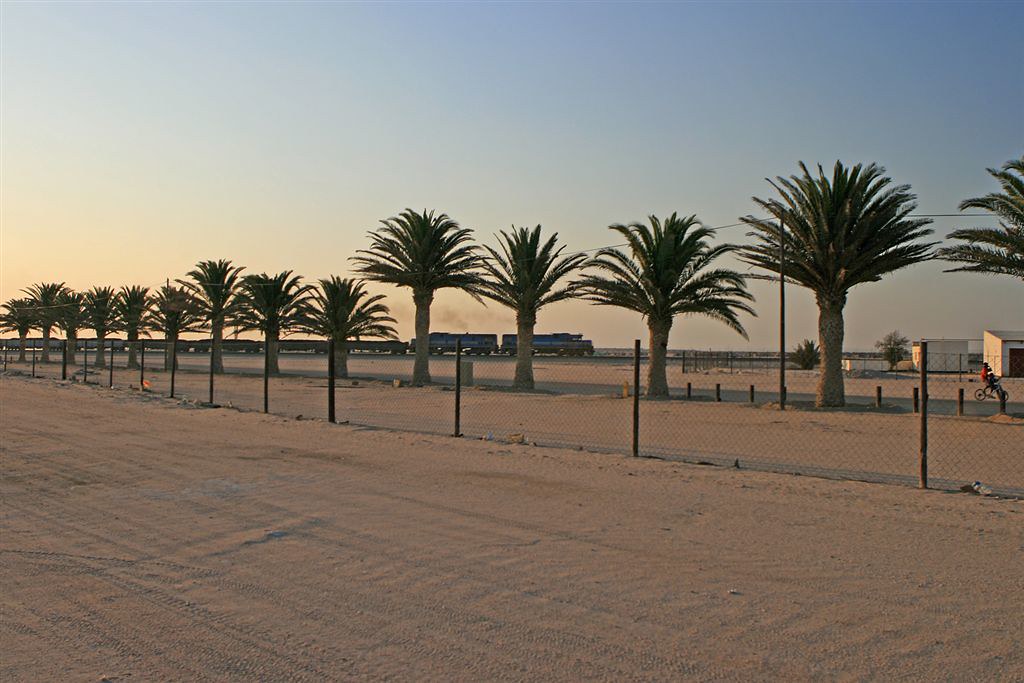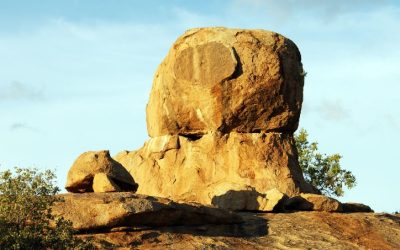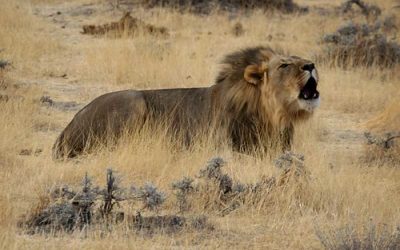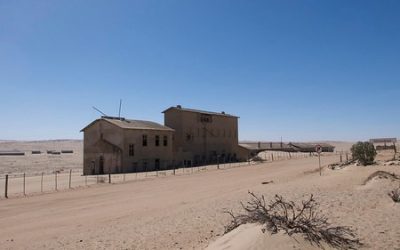Overview of Namibia’s Economy
The economy of Namibia is characterized by its rich natural resources and diverse industries that contribute to its growth. As one of the most stable economies in Southern Africa, Namibia relies heavily on mining, agriculture, and tourism to drive development. The country’s strategic geographic location and abundant mineral wealth position it as a key player in regional trade and investment. Despite facing challenges such as unemployment and economic inequality, Namibia continues to pursue economic diversification and sustainable growth strategies.
Economic Profile and Key Indicators
The economy of Namibia is characterized by its diverse natural resources, substantial agricultural sector, and important mining industry. It is one of the most stable economies in the region, supported by a well-developed financial sector and strategic sectors such as tourism and fisheries.
Namibia’s economic profile features a mix of mining, agriculture, manufacturing, and services. The country heavily depends on mineral exports, particularly diamonds, uranium, and base metals. Agriculture remains vital, mainly focusing on livestock, cropping, and fishing, with tourism also emerging as a significant contributor due to Namibia’s rich wildlife and scenic landscapes.
Key indicators of Namibia’s economy include Gross Domestic Product (GDP), inflation rate, unemployment rate, and foreign trade figures:
- GDP: Approximately $12 billion USD, with steady growth over recent years.
- GDP per capita: Around $5,000 USD, reflecting moderate income levels.
- Inflation rate: Typically low, around 3-5%, contributing to economic stability.
- Unemployment rate: Estimated at about 20%, with significant youth unemployment challenges.
- Trade balance: Namibia exports mineral resources and fish products mainly to South Africa, China, and the European Union, while importing machinery, fuel, and consumer goods.
Historical Economic Development
Namibia’s economy is primarily characterized by its rich natural resources, including minerals, fishery, and tourism, which form the backbone of its economic activities. Over the years, Namibia has transitioned from reliance on mining and agriculture to a more diversified economy with emerging sectors such as services and manufacturing. Despite its abundant resources, the country faces challenges related to unemployment, income inequality, and dependence on mineral exports, which influence its overall economic stability and growth prospects.
Historically, Namibia’s economic development has been shaped by its colonial past and subsequent independence. The country’s economy was initially centered around mining activities during the colonial period, especially diamonds and uranium. After gaining independence in 1990, Namibia took steps to diversify its economy and develop policies aimed at reducing poverty and promoting sustainable growth.
- During the 1990s, Namibia experienced steady economic growth driven by mining, agriculture, and fishing sectors.
- In the early 2000s, the country faced economic slowdowns due to global commodity price fluctuations and internal issues such as infrastructure challenges.
- In recent years, there has been increased focus on developing tourism, renewable energy, and manufacturing sectors to diversify the economy further.
- Economic development is also guided by policies aimed at promoting foreign investment, improving education and infrastructure, and addressing social inequalities.
Major Sectors of the Economy
The economy of Namibia is structured into several major sectors that play essential roles in its development and growth. These sectors include agriculture, industry, and services, each contributing differently to the nation’s gross domestic product and employment opportunities. Understanding these sectors provides insight into Namibia’s economic landscape and highlights the opportunities and challenges faced by the country.
Mining and Mineral Resources
The economy of Namibia is characterized by several major sectors that drive its development, with mining and mineral resources playing a crucial role. Mining is the cornerstone of Namibia’s economy, contributing significantly to national revenue and employment. The country is rich in mineral resources, including uranium, diamonds, copper, gold, and zinc, which are extracted and exported to various international markets. The mining sector benefits from Namibia’s stable political environment and well-developed infrastructure, enabling efficient extraction and processing of minerals.
Apart from mining, agriculture is also a vital sector, providing livelihoods for a large portion of the population and contributing to food security. Fishing is another important industry, leveraging Namibia’s extensive Atlantic coastline to produce seafood for both domestic consumption and export. The service sector, including tourism, has seen substantial growth, driven by Namibia’s diverse landscapes and wildlife, attracting tourists worldwide. Together, these sectors form the backbone of Namibia’s economy, emphasizing the importance of natural resources and sustainable development strategies to ensure long-term economic growth.
Agriculture and Livestock
The economy of Namibia is diverse, with agriculture and livestock playing vital roles in supporting livelihoods and contributing to national income. Agriculture in Namibia primarily involves crop farming and livestock rearing, adapted to the country’s arid climate and limited water resources. Common crops include maize, millet, and sorghum, which are mostly cultivated for local consumption. Livestock farming, especially cattle, goats, and sheep, forms an essential part of Namibian agriculture, providing meat, dairy products, and raw materials for local markets. These sectors not only sustain rural communities but also contribute to Namibia’s export earnings. Despite challenges such as droughts and limited arable land, agriculture and livestock remain central to Namibia’s economic stability and development prospects, supporting employment and food security across the country.
Fishing Industry
The fishing industry is a vital sector of Namibia’s economy, contributing significantly to national income and employment. Namibia’s extensive coastline along the Atlantic Ocean provides abundant marine resources, making it one of Africa’s leading fishing nations. The industry primarily focuses on the harvesting of fish species such as pilchard, anchovy, and horse mackerel, which are exported to international markets. The government strictly regulates fishing activities to ensure sustainability and prevent overfishing, which is crucial for maintaining the industry’s long-term viability. The fishing sector not only supports local communities but also drives growth in related industries like processing, shipping, and aquaculture, making it a cornerstone of Namibia’s economic development. Overall, the fishing industry plays a key role in diversifying Namibia’s economy beyond mining and agriculture, fostering economic stability and growth.
Manufacturing and Industry
The economy of Namibia is characterized by several major sectors, with manufacturing and industry playing a vital role in its development. The manufacturing sector in Namibia includes the production of beverages, textiles, and food processing, which contribute significantly to the country’s industrial output. Industries such as mining machinery, electrical appliances, and construction materials also support economic growth. Namibia’s industrial activities are often linked to its abundant natural resources, including minerals and fishery products, which foster export opportunities. Overall, manufacturing and industry are crucial for diversifying Namibia’s economy, creating employment, and promoting sustainable development within the country.
Natural Resources and Commodities
Namibia’s economy is significantly influenced by its vast natural resources and commodities, which play a vital role in shaping the country’s economic development. Rich in minerals, wildlife, and coastal resources, Namibia leverages these assets to promote growth, attract investment, and support sustainable industries. Understanding the landscape of natural resources and commodities is essential to appreciating Namibia’s economic landscape and future prospects.
Diamond and Mineral Extraction
Namibia’s economy is significantly influenced by its rich reserves of natural resources and commodities, particularly in the extraction of diamonds and minerals. The country benefits from its abundant natural wealth, which forms the backbone of its economic activities and international trade.
- Diamonds are Namibia’s most valuable mineral resource, and the country is one of the world’s leading producers of gem-quality diamonds. The industry is mainly developed along the Atlantic coastline, with exports contributing substantially to national revenue.
- Mineral extraction in Namibia extends beyond diamonds to include uranium, copper, zinc, lead, tin, and gold, facilitating diversification of the economy and attracting foreign investment.
- The government has been promoting sustainable practices in resource extraction to ensure environmental conservation and maximize economic benefits.
- Mining activities generate employment opportunities and support the development of infrastructure and local communities in mineral-rich regions.
- Challenges such as resource depletion, fluctuating global commodity prices, and the need for technological advancements continue to impact the sector’s growth and sustainability.
Hydropower and Energy Resources
Namibia’s economy relies heavily on its rich natural resources and commodities, playing a vital role in the country’s national development. The nation is endowed with diverse energy resources, including significant hydropower potential, which contributes to its energy sustainability and economic growth.
- Natural Resources and Commodities:
- Minerals such as uranium, diamonds, and zinc are key export commodities, driving revenue for Namibia.
- African wildlife and fishery resources support tourism and fishing industries, generating foreign income.
- The country’s mineral wealth, especially diamonds, is a cornerstone of its economic activities.
- Hydropower and Energy Resources:
- Namibia has limited hydropower capacity but leverages neighboring countries’ water resources for electricity imports.
- Wind and solar energy are increasingly being developed as sustainable alternatives to diversify energy sources.
- The development of renewable energy projects is essential for reducing reliance on imported fossil fuels and supporting economic stability.
Trade and Investment
The economy of Namibia is significantly shaped by trade and investment activities that drive growth and development. As a key player in the Southern African region, Namibia’s strategic location and rich natural resources make it an attractive destination for both domestic and international investors. Emphasizing sustainable practices and regional cooperation, trade and investment are vital for enhancing economic stability and expanding opportunities for its people.
Major Trading Partners
Namibia’s economy is significantly influenced by trade and investment activities, which play a crucial role in its development. The country primarily exports mineral resources such as diamonds, uranium, and copper, alongside agricultural products like seafood and livestock. Its major trading partners include South Africa, which dominates as Namibia’s largest trading partner, providing both imports and a significant market for exports. Other key partners include China, India, and the European Union, with China increasingly investing in mining and infrastructure projects. These trade relationships are vital for Namibia’s economic growth, attracting foreign direct investment and promoting regional economic integration. Strengthening trade ties and diversifying investment sources remain essential for Namibia’s continued economic stability and development trajectory.
Foreign Direct Investment (FDI)
The economy of Namibia is significantly influenced by trade and foreign direct investment (FDI), which are vital for sustainable growth and development. FDI plays a crucial role in enhancing the country’s infrastructure, creating jobs, and transferring technology. Namibia’s strategic location, rich natural resources, and stable political environment make it an attractive destination for foreign investors.
Key sectors attracting FDI in Namibia include mining, agriculture, tourism, and renewable energy. The government has implemented policies to encourage foreign investment, such as establishing special economic zones and offering tax incentives. Trade relationships mainly focus on exports of minerals, fish, and agricultural products, with key trading partners including South Africa, China, and the European Union.
- Namibia’s trade policies aim to promote export diversification and reduce dependence on traditional commodities.
- Foreign direct investment contributes considerably to the country’s gross domestic product (GDP).
- Challenges to FDI include bureaucratic hurdles, limited infrastructure in some sectors, and regional competition.
- The government continues to improve the investment climate through reforms and international cooperation.
Economic Challenges
The economy of Namibia faces a range of challenges that impact its growth and stability. As a developing country, Namibia grapples with issues such as high unemployment rates, limited diversification of industries, and reliance on natural resource exports. These economic obstacles highlight the need for strategic policies and sustainable development efforts to foster long-term prosperity for the nation.
Unemployment and Poverty
The economy of Namibia faces significant challenges related to unemployment and poverty, which hinder sustainable growth and social stability. High unemployment rates, especially among youth, contribute to economic insecurity and limit consumer spending, thereby impacting overall economic productivity. Poverty remains widespread, with many households lacking access to basic services such as healthcare, education, and clean water, perpetuating cycles of poverty across generations. The economy’s reliance on resource-based industries like mining and agriculture makes it vulnerable to external shocks and commodity price fluctuations. Addressing these issues requires targeted policies that promote diversification, job creation, and equitable distribution of wealth to improve living standards and ensure inclusive economic development in Namibia.
Income Inequality
The economy of Namibia faces significant challenges related to income inequality, which impacts social stability and sustainable development. Despite having an abundance of natural resources such as minerals and fish, the wealth generated is often concentrated in the hands of a few, leaving a large portion of the population in poverty. This disparity hampers economic growth by limiting consumer spending and reducing overall demand in local markets. Efforts to address income inequality in Namibia include policy reforms aimed at improving education, expanding access to healthcare, and promoting inclusive economic opportunities. However, structural issues like unemployment and limited diversification of the economy continue to impede progress toward a more equitable distribution of wealth.
Dependence on Commodities
Namibia’s economy faces significant challenges due to its heavy dependence on commodities, particularly minerals such as uranium, diamonds, and other natural resources. This reliance makes the country vulnerable to global fluctuations in commodity prices, which can lead to economic instability and unpredictability. When commodity prices fall, Namibia’s revenue and export earnings decline, impacting public spending and economic growth.
Furthermore, dependence on commodities limits diversification efforts, restricting other sectors like manufacturing and services from developing robustly. This narrow economic base hampers sustainable growth and employment creation for the growing population. The commodity-driven economy also exposes Namibia to external shocks, making resilience and economic stability difficult to maintain in an interconnected global market.
To address these challenges, Namibia needs to focus on diversifying its economy, investing in education, infrastructure, and sectors beyond natural resource extraction. Enhancing value addition and promoting industries such as tourism, agriculture, and renewable energy could reduce reliance on commodity exports, fostering a more stable and resilient economic future.
Government Policies and Initiatives
Government policies and initiatives play a crucial role in shaping the economic landscape of Namibia. Through strategic planning and targeted programs, the government aims to promote sustainable growth, improve infrastructure, and support key industries such as mining, agriculture, and tourism. These efforts are essential for fostering economic stability and enhancing the overall well-being of the nation’s citizens.
Economic Development Strategies
Government policies and initiatives play a crucial role in shaping Namibia’s economic development. The government has focused on diversifying the economy beyond its traditional dependence on mining, particularly uranium, diamonds, and copper, by promoting sectors such as agriculture, tourism, and manufacturing. Initiatives like the National Development Plans aim to create a sustainable and inclusive economic growth trajectory, emphasizing infrastructure development, job creation, and poverty alleviation.
Economic development strategies in Namibia include fostering local entrepreneurship, attracting foreign direct investment, and enhancing human capital through education and skills training. The government also emphasizes sustainable resource management to ensure that natural resources contribute long-term economic benefits while conserving environmental integrity. Policies supporting infrastructure projects, such as road networks and energy supply, are designed to facilitate trade and regional integration.
Furthermore, Namibia’s economic strategies are aligned with regional economic initiatives, including participation in the Southern African Development Community and the African Continental Free Trade Area, aiming to boost intra-African trade and economic cooperation. These pathways collectively aim to stabilize the economy, stimulate growth, and improve the overall standard of living for its citizens.
Private Sector Support
Government policies and initiatives play a crucial role in shaping Namibia’s economic landscape by fostering a conducive environment for growth, investment, and development. The government has implemented strategies such as the National Development Plans, aiming to diversify the economy beyond its traditional reliance on mining and agriculture. These policies emphasize infrastructure development, skills enhancement, and supporting small and medium-sized enterprises (SMEs) to stimulate economic activity.
The private sector support is vital in driving Namibia’s economic progress. Through public-private partnerships, the government encourages investment in key sectors such as tourism, fisheries, and renewable energy. Various incentives, tax breaks, and financing programs are provided to attract foreign direct investment and local entrepreneurship. This collaborative approach aims to create jobs, improve productivity, and ensure sustainable economic growth for Namibia.
Regional Economic Integration
Government policies and initiatives in Namibia play a crucial role in shaping the country’s economic landscape, aiming to promote sustainable growth and development. The government has implemented various strategies to diversify the economy, reduce dependency on mining, and foster sectors such as agriculture, tourism, and manufacturing. Regional economic integration is also a key focus, with Namibia actively participating in organizations like the Southern African Development Community (SADC) and the Southern African Customs Union (SACU), which facilitate trade, investment, and joint development projects among neighboring countries. These initiatives aim to enhance market access, improve infrastructure, and foster economic stability across the region, ultimately contributing to Namibia’s economic resilience and growth prospects.
Future Outlook and Opportunities
The economic landscape of Namibia presents a blend of emerging opportunities and future prospects driven by innovative sectors and strategic developments. As the country continues to leverage its natural resources and invest in sustainable growth, there are promising avenues for economic enhancement and diversification. Understanding these prospects is crucial for stakeholders aiming to capitalize on Namibia’s potential and contribute to its long-term prosperity.
Sustainable Development Goals
The future outlook for Namibia’s economy presents several opportunities aligned with sustainable development goals that aim to promote inclusive growth, environmental sustainability, and social well-being. Strategic investments in renewable energy, particularly solar and wind, can reduce reliance on fossil fuels and enhance energy security, supporting climate action and affordable clean energy targets. Additionally, diversifying the economy beyond mining and agriculture—by fostering sectors such as tourism, fisheries, and value-added industries—can create sustainable employment and economic resilience.
Advancing education, healthcare, and infrastructure development will further promote equitable growth, contributing to the reduction of poverty and inequality. Emphasizing responsible resource management and environmental conservation aligns with life on land and below water goals, ensuring natural ecosystems are preserved for future generations. International partnerships and regional integration can open new markets and facilitate technology transfer, enabling Namibia to capitalize on emerging global trends and achieve sustainable economic progress consistent with the United Nations Sustainable Development Goals.
Emerging Sectors and Innovation
The future outlook of Namibia’s economy is poised for growth through the development of emerging sectors and a focus on innovation. As the country leverages its rich natural resources, there are significant opportunities in renewable energy, particularly solar and wind power, to meet domestic demand and export energy to regional markets. Additionally, Namibia’s expanding tourism industry, driven by its unique landscapes and wildlife, presents avenues for sustainable development and job creation. The agriculture sector is also expected to benefit from innovative farming techniques and technologies, supporting food security and export capabilities.
Emerging sectors such as technology and digital services are gradually gaining momentum, supported by government initiatives aiming to foster a knowledge-based economy. Investment in infrastructure, education, and entrepreneurship will further enhance these sectors’ growth potential. Namibia’s strategic positioning and efforts to diversify its economy reduce over-reliance on mineral exports, paving the way for a resilient economic future.
Innovation plays a crucial role in unlocking new opportunities for Namibia. Embracing technological advancements, fostering startups, and promoting research and development can lead to transformative impacts across industries. The country’s commitment to sustainable practices and green initiatives aligns with global trends, creating attractive prospects for foreign investment and partnerships that will drive economic diversification and long-term prosperity.
Infrastructure Development
The future outlook for Namibia’s economy presents promising opportunities, particularly in infrastructure development. As the nation continues to leverage its rich natural resources and strategic location, investments in transportation, energy, and digital infrastructure are set to enhance economic growth and regional connectivity.
Infrastructure projects such as expanding transportation networks, improving port facilities, and developing renewable energy sources will not only boost domestic productivity but also attract foreign investment. These developments are expected to create new job opportunities, stimulate industries, and strengthen Namibia’s position as a key trade hub in southern Africa.
Furthermore, focused efforts on infrastructural modernization will support sectors like mining, tourism, and agriculture, fostering sustainable growth. By prioritizing innovative infrastructure solutions, Namibia can unlock its full economic potential, improve living standards, and foster long-term resilience in its economy.





0 Comments